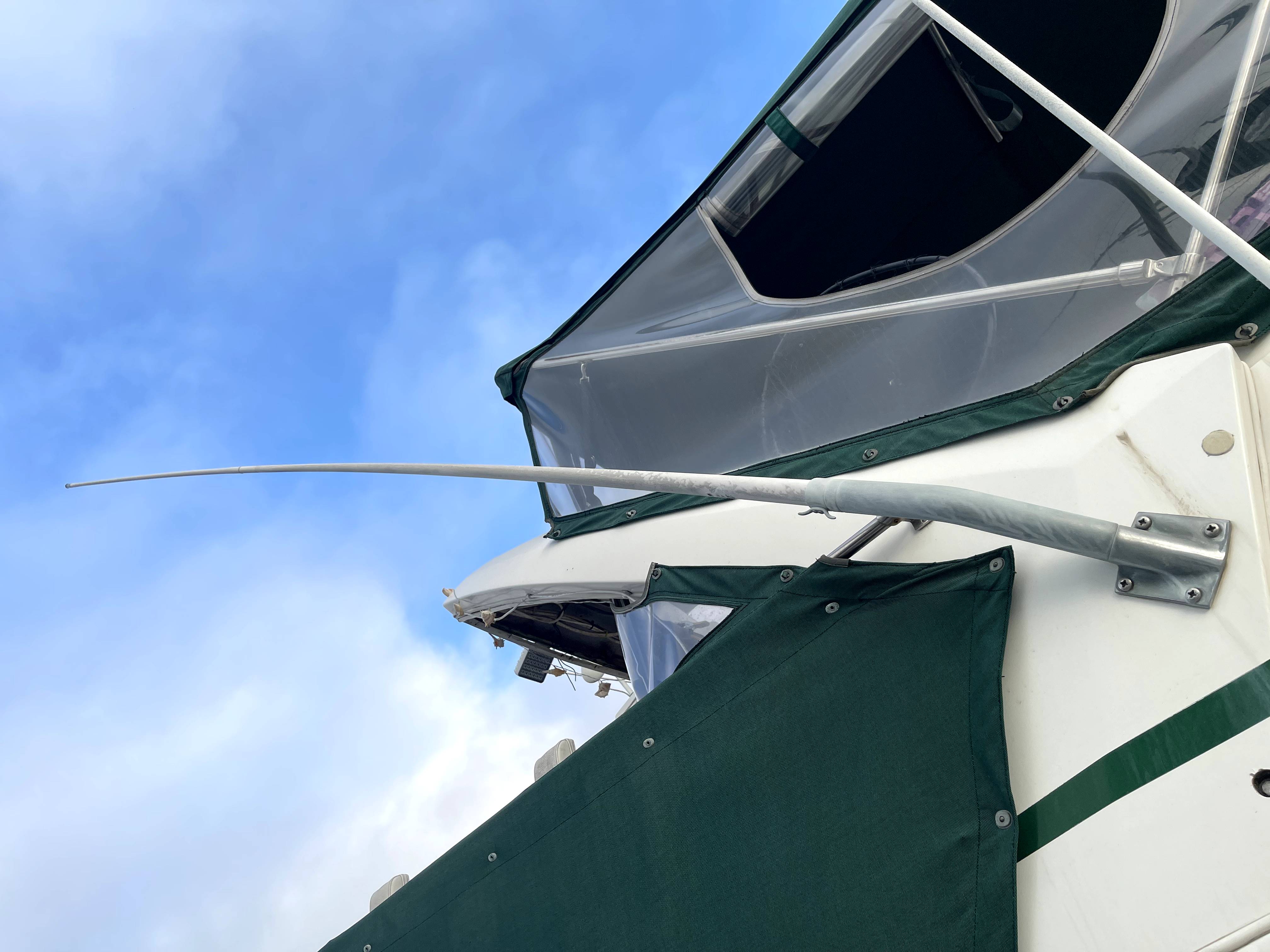Basics of Outriggers
-
Purpose:
Outriggers allow anglers to deploy multiple lines simultaneously while keeping them separated. This mimics a natural school of baitfish and increases the chances of attracting game fish. -
Structure:
Outriggers consist of long poles (usually made of aluminum or fiberglass) that attach to the boat. They can extend outward and upward, creating a wide spread of lines.



Key Components
-
Poles:
- Usually telescoping for compact storage and easy deployment.
- Extend outward from mounts on the sides of the boat.
-
Mounts:
- Attach to the boat’s deck, gunwales, or hardtop.
- Adjustable mounts allow for different angles to match fishing conditions.
-
Clips (Release Clips):
- Small mechanisms that hold the fishing line in place on the outrigger.
- When a fish strikes, the clip releases the line, allowing the angler to fight the fish without resistance from the outrigger.
-
Rigging Lines:
- Nylon or Dacron lines used to connect the fishing line to the clips on the outrigger.
-
Halyard System:
- A pulley system that raises and lowers the release clips for easy adjustment.
How They Work
-
Setup:
- The poles are extended outward, typically at an angle of 30-45 degrees from the boat.
- Fishing lines are clipped to release clips on the outrigger’s rigging lines.
-
Deployment:
- As the boat moves, the fishing lines trail behind but are kept apart by the outrigger’s spread.
- Bait or lures are set at varying distances from the boat to cover more water.
-
Strike and Release:
- When a fish strikes the bait, the line pulls free from the clip, allowing the reel to engage directly with the fish.
- This prevents the fish from feeling resistance from the outrigger and improves hookup rates.
Advantages of Using Outriggers
- Increased Coverage:
- Creates a wider fishing area, mimicking a natural bait spread.
- Reduced Tangling:
- Keeps lines separated even when trolling at high speeds or turning the boat.
- Targeting Pelagic Species:
- Particularly effective for fish like tuna, mahi-mahi, sailfish, and marlin that hunt near the surface.
- Ability to Troll More Lines:
- Maximizes the number of baits or lures in the water.
Tips for Effective Use
- Adjust Angle:
Modify the outrigger’s angle based on sea conditions to keep lines properly tensioned. - Vary Lure/Bait Placement:
Use staggered distances from the boat to mimic a natural school. - Maintain Speed:
Ideal trolling speeds depend on the target species; adjust accordingly. - Inspect Rigging:
Regularly check clips and halyard lines for wear or damage to prevent breakage.
Outriggers are an invaluable tool for enhancing your offshore fishing setup, especially for trolling

